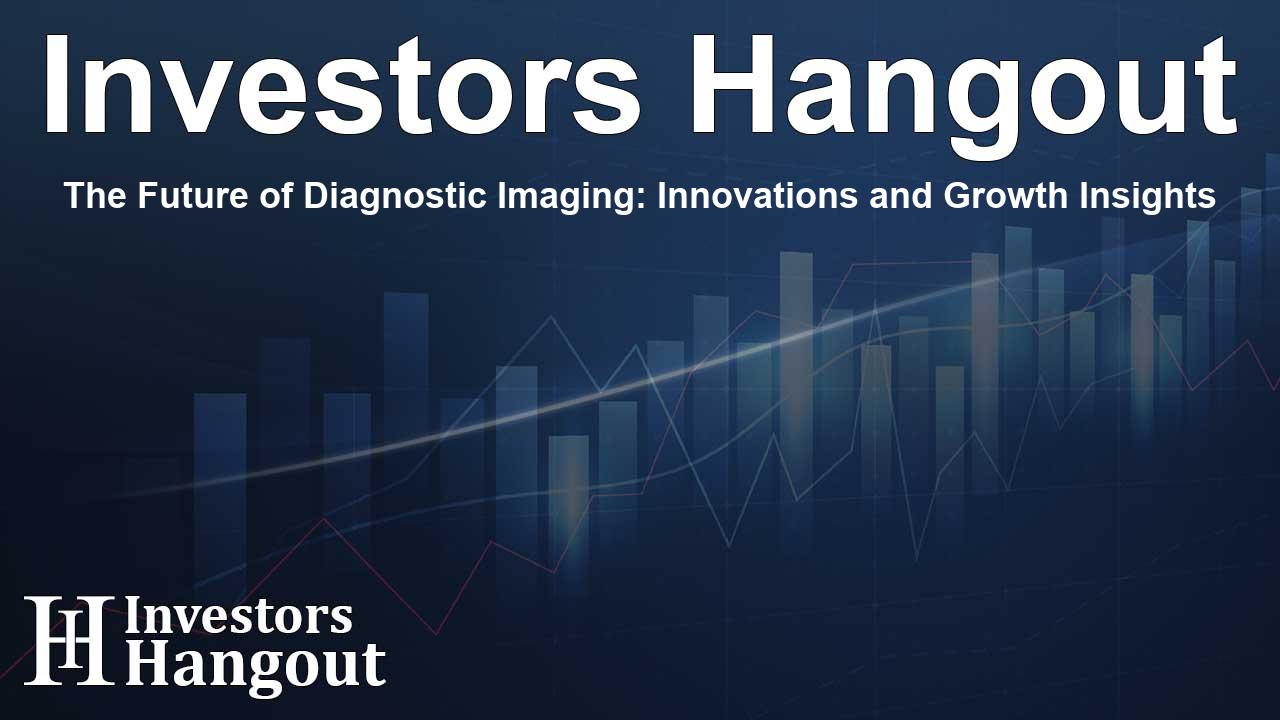The Future of Diagnostic Imaging: Innovations and Growth Insights

Revolutionizing Medical Imaging
The medical imaging market is on the brink of transformative growth, predicted to flourish over the coming years as technology continues to evolve. An increasing focus on early diagnosis alongside advancements in imaging technologies is driving this expansion. It is essential to understand the key factors fueling this upward trend.
Market Projections and Growth
The rise of the medical imaging market reflects its importance within the healthcare sector. With a current valuation projected to surpass USD 42.6 billion soon, the market anticipates a robust growth trajectory that could see it reach USD 66.3 billion by the end of the next decade. This expected growth of approximately 5.7% compound annual growth rate (CAGR) suggests a formidable upsurge in demand for imaging technologies.
Key Drivers of Market Expansion
Chronic Disease Management
Chronic diseases such as cancer, heart disease, and diabetes remain prevalent, underscoring the necessity for early and accurate imaging solutions. The significant burden of these ailments places an increased emphasis on the need for advanced diagnostic tools to facilitate precise treatments.
Technological Advancement
Renowned U.S. companies like GE Healthcare and Hologic are forging paths in AI-driven imaging and portable diagnostic technologies. These innovations are not only enhancing the accuracy and efficiency of imaging but are also making these services more accessible to broader populations. As technology progresses, so too does the capability to diagnose and treat patients effectively.
Regulatory Improvements
Increasing FDA support for AI-based imaging platforms and advanced diagnostic devices propels market adoption in clinical environments. These regulatory advancements make it easier for healthcare facilities to integrate innovative technologies seamlessly into their existing processes.
Aging Population
With a growing segment of the population crossing the age threshold of 65, hospitals and imaging centers are witnessing a soaring demand for advanced imaging options like MRI and CT scans. This demographic shift necessitates more frequent assessments and innovative services tailored to meet the unique health needs of older adults.
Market Dynamics and Technological Innovations
The global increase in the geriatric population is fostering a rising demand for diagnostic imaging solutions. The ability to conduct early and precise diagnoses using techniques such as MRI and ultrasound brings about favorable outcomes for treatment while also lowering healthcare costs. As healthcare infrastructures adapt to the needs of older patients, there is a growing investment in imaging technologies.
Moreover, advancements in imaging technology, including enhanced resolution and innovative modalities like PET-CT, are fundamentally transforming patient experiences and diagnostic precision. The incorporation of AI and machine learning technologies in image analysis promises expedited interpretations and better functionality in clinical workflows.
Recent Innovations in Medical Imaging
Collaborative Advances
Companies are increasingly forming partnerships to drive innovations in medical imaging. For instance, notable collaborations are underway, where tech firms meld their expertise with healthcare providers’ needs to deliver cutting-edge solutions that enhance the quality of imaging.
Significant Product Developments
Recent product launches, particularly AI-enhanced imaging systems, are setting new standards in diagnostic precision, making it possible for healthcare practitioners to treat a larger volume of patients effectively. Furthermore, AI platforms equipped with capabilities for detailed body composition analysis are significantly enhancing preventive health measures.
Challenges Ahead for Medical Imaging
Despite promising growth, the medical imaging industry faces substantial hurdles. The initial costs of sophisticated imaging equipment can be prohibitive, particularly for smaller facilities and those in developing regions. These financial barriers pose challenges to market entry and can hinder the implementation of advanced imaging solutions.
Safety Concerns in Imaging
Moreover, safety concerns related to radiation exposure in procedures involving CT scans and X-rays are critical. Regulatory bodies continue to impose stringent guidelines regarding radiation dosages, aiming to ensure patient safety while navigating the complexities of clinical compliance.
Competitive Landscape and Market Segmentation
As competition intensifies, companies in the medical imaging sector are redirecting their focus towards introducing new technologies that leverage AI and automation. The segmentation of the market spans various technologies and applications, ensuring a targeted approach towards patient groups and clinical needs.
Understanding Market Facets
These segments encompass various imaging modalities, patient types, and the differing requirements of healthcare providers. From X-ray equipment to MRI and ultrasound technologies, the diversity within the industry allows for tailored solutions suited to specific medical needs.
Future Outlook and Regional Developments
North America’s established healthcare infrastructure continues to drive leadership in the global medical imaging market. Companies like GE Healthcare work vigorously to maintain this edge through constant innovation and adaptation. Conversely, the Asia-Pacific region is set to experience rapid growth owing to infrastructural improvements and increased healthcare investments.
In Europe, there is a noteworthy surge in demand driven by high healthcare spending and the urgent need for progressive diagnostic technologies. Likewise, emerging markets in regions such as Latin America and the Middle East are capitalizing on growing healthcare expenditure and the rising demand for early diagnosis.
Frequently Asked Questions
What is driving growth in the medical imaging market?
Key drivers include the increasing prevalence of chronic diseases, advancements in technology, regulatory support for AI adoption, and an aging population requiring diagnostic services.
How are technological advancements impacting medical imaging?
Technological enhancements are leading to improved imaging precision, accessibility, and faster diagnoses, ultimately enhancing patient care.
What challenges does the medical imaging industry face?
The market faces high costs of advanced equipment, safety concerns regarding radiation exposure, and regulatory compliance challenges.
Who are the major players in the medical imaging market?
Prominent companies include GE Healthcare, Siemens Healthineers, and Philips, among others, driving innovation and market growth.
Which regions show significant potential for medical imaging growth?
North America leads the market, while the Asia-Pacific region is expected to grow rapidly due to increased healthcare spending and improved infrastructure.
About The Author
Contact Logan Wright privately here. Or send an email with ATTN: Logan Wright as the subject to contact@investorshangout.com.
About Investors Hangout
Investors Hangout is a leading online stock forum for financial discussion and learning, offering a wide range of free tools and resources. It draws in traders of all levels, who exchange market knowledge, investigate trading tactics, and keep an eye on industry developments in real time. Featuring financial articles, stock message boards, quotes, charts, company profiles, and live news updates. Through cooperative learning and a wealth of informational resources, it helps users from novices creating their first portfolios to experts honing their techniques. Join Investors Hangout today: https://investorshangout.com/
The content of this article is based on factual, publicly available information and does not represent legal, financial, or investment advice. Investors Hangout does not offer financial advice, and the author is not a licensed financial advisor. Consult a qualified advisor before making any financial or investment decisions based on this article. This article should not be considered advice to purchase, sell, or hold any securities or other investments. If any of the material provided here is inaccurate, please contact us for corrections.
